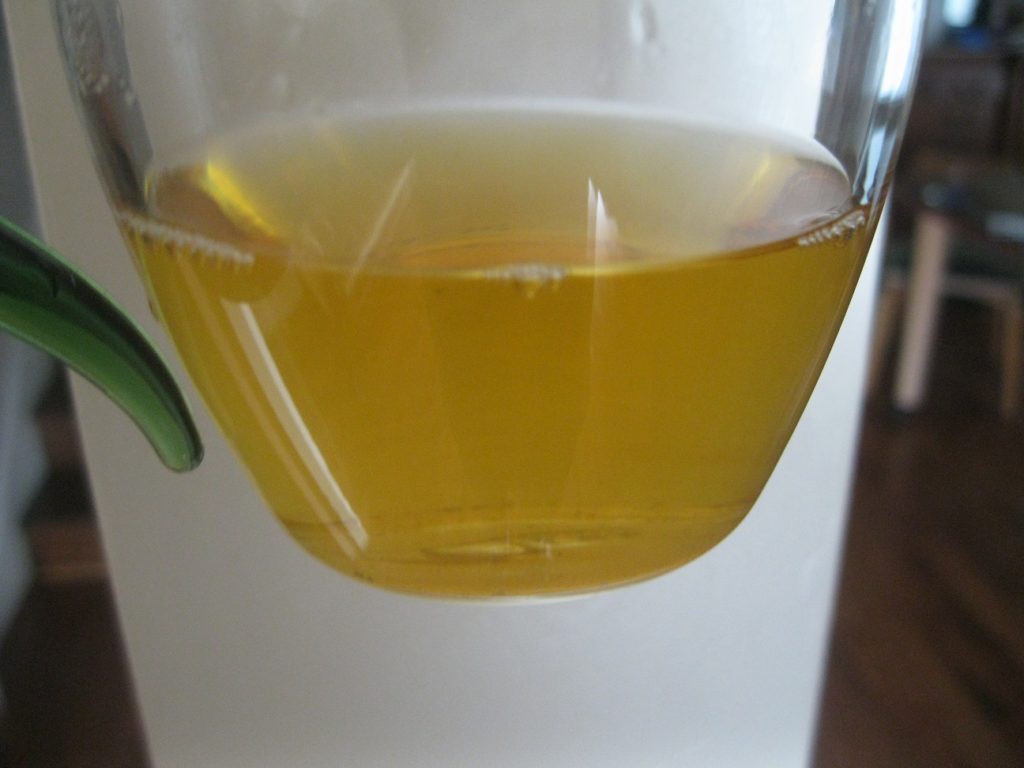Jingmai Tete A Tete

Jingmai Tete A Tete finally gives the Puerh Junky the chance to brandish his nonexistent French. More importantly, it allows him to discuss an interlude between two Jingmai from 2014, the Guper and Haixintang. This encounter has been more than a month in waiting, as it took a spell to complete the Haixintang page. Let’s start there.
Haixintang
Toward the end of ’22 after loading up on Xinghai offerings, the Puerh Junky decided upon a deeper exploration of Haixintang. Both the brick and tuo forms of Grenouille impressed, but it was time to determine whether something of their production personality could be gleaned by picking up a few of their offerings. An ’06 tuo from Youle could not make The Collection for the time being. Its got an unfamiliar Youle expression in the Puerh Junky‘s limited forays with that terroir. At the same time, it does manifest an aggressive spirit that resembles some aspects of Grenouille. Conversely, the Jingmai to be discussed and ’08 Nannuo (unlisted) could hardly be viewed in the same light. Instead of aggression, the focus is on simplicity, a truth to the terroir. It’s difficult to find a thread uniting them. Let’s get on to how the Jingmai measures up to the GPE offering.
GPE & HXT (Sitting in a Tree)
Jingmai is often recommended for newbies. The aroma is bright, fresh, effulgent. There’s probably a great amount of it that’s given the ole sweet-me-now processing, so brewing tends to be very forgiving. The terroir is large and it’s also conceivable that by some measure it’s naturally sweet earlier than some others. It’s also imaginable that there’s a processing style common among many producers that favours woking for sweetness.
The thing is the Puerh Junky never came into contact with such Jingmai between ’12-15. Large- or small-leaf varieties, they were quite typical of other productions requiring a spell to transform. One possible exception was the first Jingmai tasted in KM, which was a very early spring, tippy production that possessed formidable bitterness behind the orchid aroma. These prefatory remarks relate directly to the contrast between the GPE and HXT offers.
Both have a wickedly inviting aroma but the GPE possesses a bitterness, a burliness that is possibly less frequently offered by Western vendors. The HXT hasn’t even a smidge of bitterness. It’s perfect for the beginning brewer. The HXT is one of the most even-keeled production ever drunk. Though infusion times require building, the taste and character hardly budges. The sweetness remains about the same, ditto for the very mild astringency. It’s a light refreshing breeze by a tree-lined brook, a shallow and clean brook streaming over little smooth pebbles, shimmers of sunlight here and there.
Suppose you decide to head downstream and you know that you’re in a Grimm Fairytale. Since we’re talking about a Jingmai, you know that the story should turn out happily ever after, but not without a bit of drama, a lost shoe, some misbehaving ogre, an unrelenting step-relative. That’s the GPE. The travails make the story at the very least more interesting. There’s a crescendo, it’s going somewhere, that part of Jingmai that your step-uncle didn’t tell you about.
Final Words
The tete a tete between GPE and HXT reveals a remarkable contrast between two offerings from the same terroir. HXT is definitely best for those averse to bitterness, beginners, and for moods where one can do without the drama. GPE is for those who haven’t had Jingmai bitterness and depth while still remaining true to the Jingmai spirit. Thought this clip at 6:41 captured the differences.
